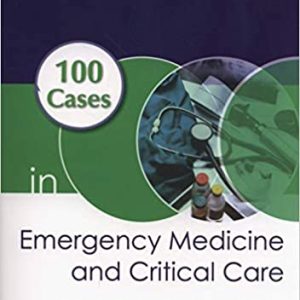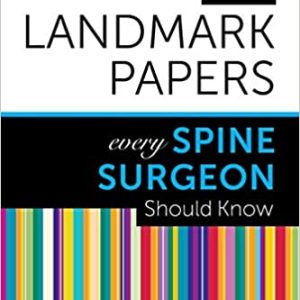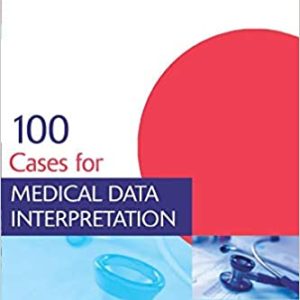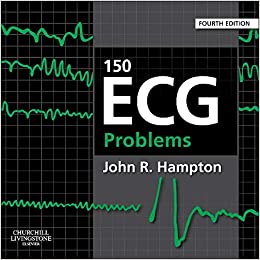Description
### Anatomy & Physiology Made Easy: A Simplified Overview
Anatomy and Physiology (A&P) are foundational subjects for understanding the human body. **Anatomy** is the study of the structure of the body and its parts, while **Physiology** is the study of how those parts function and work together.
Here’s a simplified breakdown of key concepts:
—
### **1. Organization of the Human Body**
The human body is organized in a hierarchical manner:
– **Atoms** → **Molecules** → **Cells** → **Tissues** → **Organs** → **Organ Systems** → **Organism (the whole body)**
—
### **2. Basic Anatomical Terms**
– **Anterior (ventral)**: Front
– **Posterior (dorsal)**: Back
– **Superior (cranial)**: Above or towards the head
– **Inferior (caudal)**: Below or towards the feet
– **Medial**: Toward the midline of the body
– **Lateral**: Away from the midline
– **Proximal**: Closer to the origin of the body part or the point of attachment
– **Distal**: Farther from the origin of the body part
—
### **3. The 11 Organ Systems of the Human Body**
Each organ system has specific functions, and they work together to maintain homeostasis (balance):
1. **Integumentary System**: Skin, hair, nails. Protects the body and regulates temperature.
2. **Skeletal System**: Bones, joints. Provides structure and support, protects organs, and enables movement.
3. **Muscular System**: Muscles. Allows movement, maintains posture, and produces heat.
4. **Nervous System**: Brain, spinal cord, nerves. Controls body activities through electrical impulses.
5. **Endocrine System**: Glands (like the thyroid and pancreas). Secretes hormones to regulate processes like metabolism, growth, and mood.
6. **Cardiovascular System**: Heart, blood vessels. Transports nutrients, oxygen, and wastes throughout the body.
7. **Lymphatic/Immune System**: Lymph nodes, spleen, immune cells. Defends against infection and disease.
8. **Respiratory System**: Lungs, trachea, bronchi. Brings oxygen into the body and removes carbon dioxide.
9. **Digestive System**: Mouth, stomach, intestines. Breaks down food for nutrient absorption.
10. **Urinary System**: Kidneys, bladder. Removes wastes from the blood and regulates water balance.
11. **Reproductive System**: Ovaries, testes. Reproduces and nurtures offspring.
—
### **4. Cells: The Building Blocks of Life**
Cells are the smallest functional units of life. Key cell types include:
– **Epithelial cells**: Line organs and cavities, provide protection.
– **Muscle cells**: Enable movement (skeletal, smooth, and cardiac muscle).
– **Nerve cells (neurons)**: Transmit electrical signals for communication.
– **Blood cells**: Red blood cells (carry oxygen) and white blood cells (fight infection).
—
### **5. Tissues: Groups of Similar Cells**
Tissues are made of similar cells that work together to perform a specific function. There are four main tissue types:
1. **Epithelial Tissue**: Covers and lines surfaces (e.g., skin, digestive tract).
2. **Connective Tissue**: Provides support and structure (e.g., bones, blood, cartilage).
3. **Muscle Tissue**: Contracts to produce movement (e.g., skeletal, cardiac, smooth muscle).
4. **Nervous Tissue**: Transmits electrical signals (e.g., brain, spinal cord, nerves).
—
### **6. Major Organs and Their Functions**
– **Heart**: Pumps blood to distribute oxygen and nutrients.
– **Brain**: Controls thoughts, memory, emotion, and bodily functions.
– **Lungs**: Facilitate the exchange of oxygen and carbon dioxide.
– **Kidneys**: Filter blood to remove wastes and regulate fluid balance.
– **Stomach & Intestines**: Break down food and absorb nutrients.
– **Liver**: Processes nutrients and detoxifies the blood.
—
### **7. Homeostasis: Maintaining Balance**
Homeostasis is the body’s ability to maintain a stable internal environment, despite external changes. Key examples include:
– **Thermoregulation**: Maintaining body temperature.
– **Blood sugar regulation**: Insulin helps regulate glucose levels.
– **Blood pressure regulation**: The heart and blood vessels maintain healthy blood flow.
—
### **8. Circulatory System (Cardiovascular)**
The circulatory system is made up of the **heart**, **blood vessels**, and **blood**:
– **Heart**: Pumps blood through the body.
– **Blood vessels**: Arteries (carry blood away from the heart), veins (carry blood back to the heart), capillaries (exchange of gases and nutrients).
– **Blood**: Red blood cells (carry oxygen), white blood cells (fight infection), platelets (aid in clotting), plasma (fluid component).
—
### **9. Respiratory System**
The respiratory system allows for the exchange of gases—mainly oxygen and carbon dioxide:
– **Nose/Mouth**: Air enters the body.
– **Trachea**: Windpipe that directs air to the lungs.
– **Bronchi**: Branches leading into the lungs.
– **Alveoli**: Tiny air sacs where gas exchange occurs.
– **Diaphragm**: Muscle that helps with breathing by contracting and relaxing.
—
### **10. Digestive System**
The digestive system processes food, absorbs nutrients, and eliminates waste:
– **Mouth**: Chews food and starts digestion with enzymes in saliva.
– **Esophagus**: Moves food to the stomach via peristalsis.
– **Stomach**: Breaks down food with stomach acids and enzymes.
– **Small intestine**: Nutrient absorption.
– **Large intestine**: Absorbs water and forms waste.
—
### **11. The Musculoskeletal System**
This system provides structure and allows movement:
– **Bones**: Give structure to the body and protect organs.
– **Joints**: Connect bones and allow for movement.
– **Muscles**: Contract to enable movement.
—
### **12. The Nervous System**
The nervous system controls body functions through electrical signals:
– **Central Nervous System (CNS)**: Brain and spinal cord.
– **Peripheral Nervous System (PNS)**: Nerves that connect the CNS to the rest of the body.
– **Neurons**: Nerve cells that transmit signals.
– **Synapse**: The junction where nerve cells communicate.
—
### **Summary**





Reviews
There are no reviews yet.